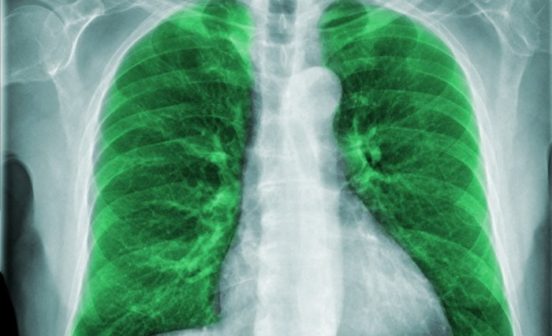Prevention Innovative Spatial Mapping of Airways Offers New Insights into Asthma

Researchers have identified distinct differences in the spatial organisation of cells in the airway of healthy people and those with asthma.
Published in Nature Immunology, the study provides a never-before-seen view of the organisation of cells within the lung airway wall, revealing how cells are arranged, how they interact, and how these distinct ‘cellular ecosystems’ are disrupted in asthma.
Led by researchers at Imperial’s National Heart and Lung Institute (NHLI), in collaboration with Harvard Medical School and Vanderbilt University, the study used a cutting-edge technique called single-cell spatial transcriptomics to analyse human lung tissue biopsies with exceptional precision. The study was funded by the Wellcome Trust, NIHR Imperial BRC and the British Heart Foundation Centre for Research Excellence at Imperial College London.
This approach enabled the researchers to capture hundreds of markers for each cell, providing researchers and clinicians with a powerful new research tool to explore the lung’s complex cellular landscape.
In healthy individuals, certain cell types – organised into what the researchers call ‘cellular ecosystems’ – work together to protect against viruses and inflammation, while also contributing to immune training and memory. In people with asthma, however, interactions among these cells become dysregulated, causing them to cluster abnormally, contributing to inflammation and disease.
The study mapped the spatial organisation of cells in the airway wall with unprecedented detail, uncovering which cells are dysregulated and revealing how their interactions at the cellular level are disrupted. This important breakthrough provides new insights into tissue-level changes in asthma, laying the groundwork for more targeted and effective treatments. Building on these findings, the researchers identified and characterised cell types that are faulty or dysregulated in asthma, some of which have not been previously targeted by existing treatments.
While current treatments can reduce inflammation and ease symptoms, they do not address the underlying mechanisms driving the disease. The spatial mapping developed in this research provides new insights into how cells interact and organise within the airway wall, offering a valuable platform for further investigation into cellular changes associated with asthma. This represents an essential step towards developing more effective therapeutic strategies that not only better manage symptoms but also begin to address the underlying causes of asthma, bringing us closer to the possibility of a long-term cure.
Dr Régis Joulia, co-lead author and Advanced Research Fellow at NHLI, said, “Our findings represent a major step forward in understanding how the lungs work in both health and disease. While most current asthma treatments focus on managing flare-ups or exacerbations, they often miss the deeper changes happening in lung structure.
Our next goal is to study more patient samples to better understand the wide variety of asthma types. We believe that by learning more about how cells communicate and miscommunicate in asthma, we can develop smarter treatments—ones that not only ease symptoms but also help rebuild a healthy lung for the millions living with chronic lung disease.”
Professor Clare Lloyd, co-lead author and Professor of Respiratory Immunology at NHLI, said, “Examining lung tissue during health and disease is vital for furthering our understanding of respiratory health, particularly since it is now recognised that the local environment influences cell function and affects relationships with neighbouring cells.
This spatial mapping technique also enabled us to examine lung tissue from patients on a clinical trial, so we can understand at a cellular and molecular level how a particular drug affects cell function within the lungs.”
Dr Erika Kennington, Head of Research & Innovation at Asthma + Lung UK, said, “This important research has uncovered the exact location of different types of lung cells and the signals they produce, which is key to understanding how the immune system responds to threats and triggers in people with lung conditions. Here the scientists found that in people with asthma, the distribution and density of these lung cells have become dysregulated.
“This research will provide insight into what can go wrong in the lungs of people with asthma and could help suggest new targets to provide more effective treatments. But more research like this is needed to find more effective treatments for people with lung conditions. Despite millions battling for breath every day, funding for lung health research is on life support. Without change, lung conditions will keep killing more people in the UK than anywhere else in Europe.”





